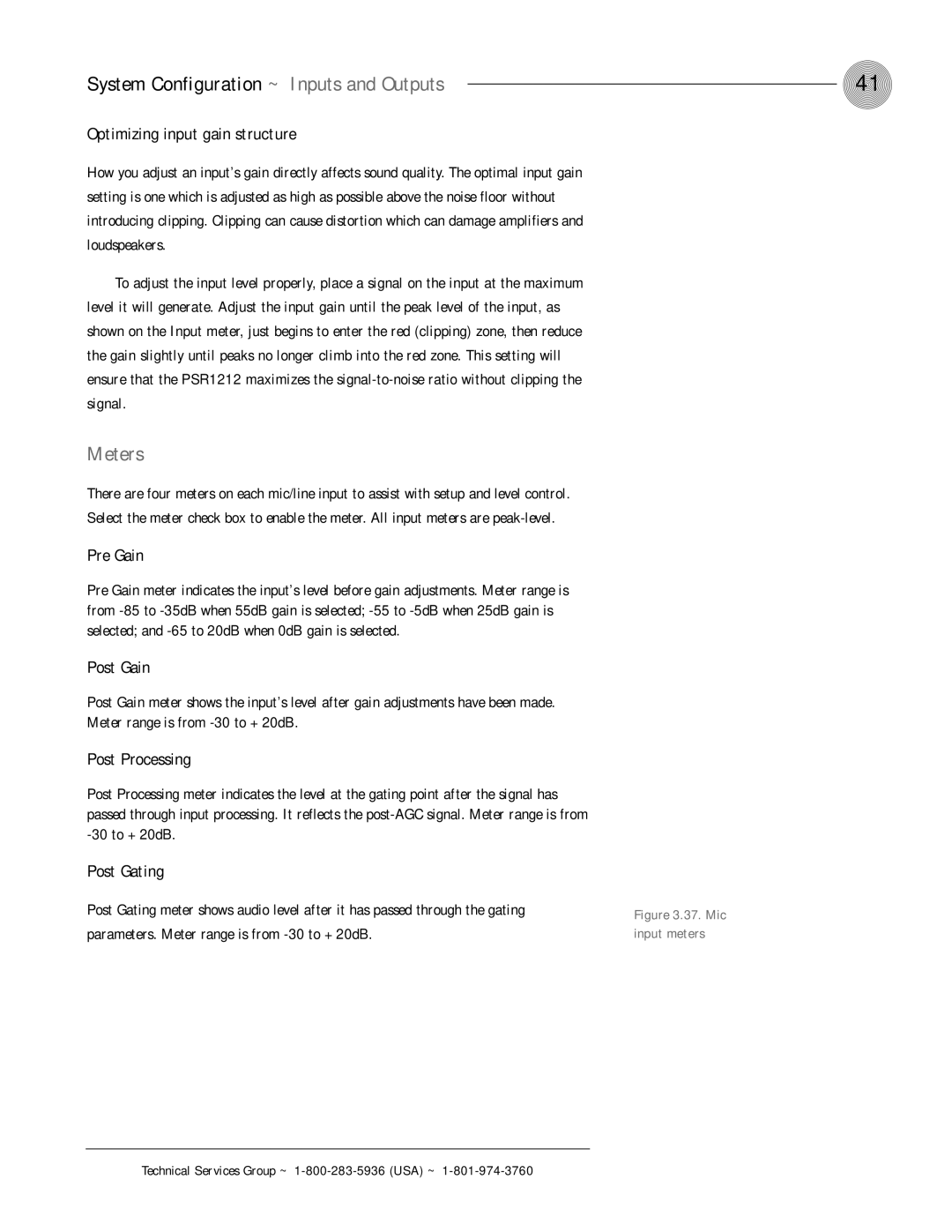
System Configuration ~ Inputs and Outputs
Optimizing input gain structure
How you adjust an input’s gain directly affects sound quality. The optimal input gain
setting is one which is adjusted as high as possible above the noise floor without
introducing clipping. Clipping can cause distortion which can damage amplifiers and
loudspeakers.
To adjust the input level properly, place a signal on the input at the maximum
level it will generate. Adjust the input gain until the peak level of the input, as
shown on the Input meter, just begins to enter the red (clipping) zone, then reduce
the gain slightly until peaks no longer climb into the red zone. This setting will
ensure that the PSR1212 maximizes the
signal.
Meters
There are four meters on each mic/line input to assist with setup and level control.
Select the meter check box to enable the meter. All input meters are
Pre Gain
Pre Gain meter indicates the input’s level before gain adjustments. Meter range is from
Post Gain
Post Gain meter shows the input’s level after gain adjustments have been made. Meter range is from
Post Processing
Post Processing meter indicates the level at the gating point after the signal has passed through input processing. It reflects the
Post Gating
Post Gating meter shows audio level after it has passed through the gating
parameters. Meter range is from
41
